If you're wondering how to remove a theme from your WordPress site, you've come to the right place. Whether you're decluttering your theme collection or ensuring your site's security and performance, knowing the steps to safely delete a WordPress theme is essential.
Perhaps you've installed a few too many themes and want to clean up your dashboard? Whatever the reason, removing a WordPress theme is a simple process that can help keep your site running smoothly and efficiently.
In this comprehensive guide, we'll walk you through the 4 methods to safely and effectively remove any unwanted themes from your WordPress installation. The methods we will discuss in this guide are;
- Delete a Theme By Contacting Your Host
- Remove WordPress Theme Using FTP/SFTP
- Remove Theme by visiting the WordPress dashboard
- Remove Theme Using WP-CLI
Whether you're a beginner or a seasoned WordPress user, this guide will provide you with the knowledge and confidence to take control of your site's appearance and performance.
So, let's dive in and discover how easy it is to remove a WordPress theme and streamline your site for optimal success!
Important Steps to Do Before You Remove a WordPress Theme
Before you delete a WordPress theme, it's crucial to take a few precautionary steps to ensure the process is smooth and your website remains secure and functional. Here are the important steps to follow:
1. Backup Your Website
- Why: A full backup ensures that you can restore your site to its previous state if anything goes wrong during the theme deletion process.
- How: Use a reliable backup plugin like UpdraftPlus, BackupBuddy, or manually back up your site using your hosting provider's tools.
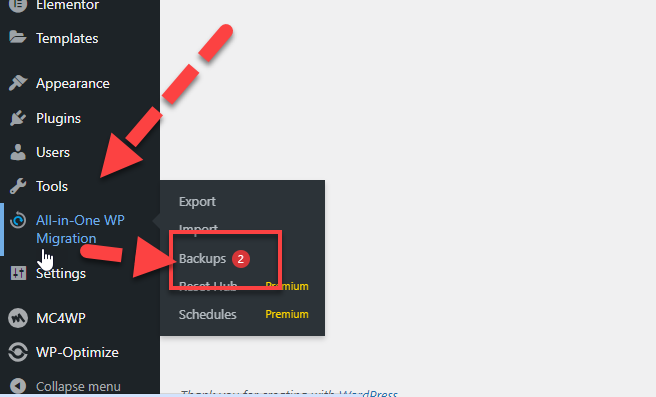
2. Switch to a Different Theme
- Why: WordPress requires at least one theme to be active. You need to switch to a different theme before deleting the current one.
- How: Go to the WordPress dashboard, navigate to Appearance > Themes,

and activate a new theme.
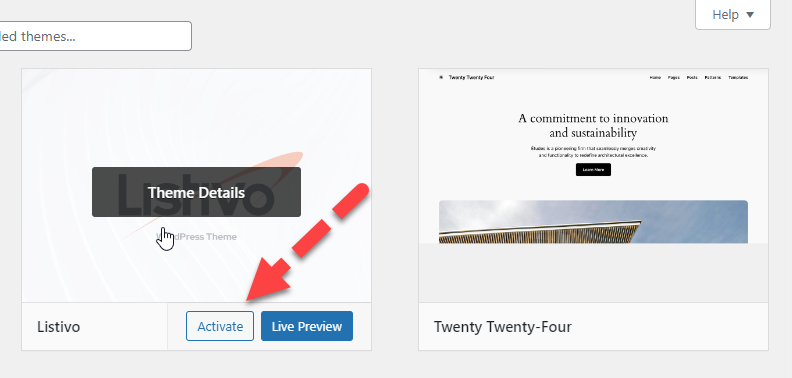
3. Check for Active Child Themes
- Why: If you are using a child theme, ensure that the parent theme is still installed. Deleting a parent theme can break the child theme.
- How: Identify if your active theme is a child theme by checking the theme details in the Appearance > Themes section.
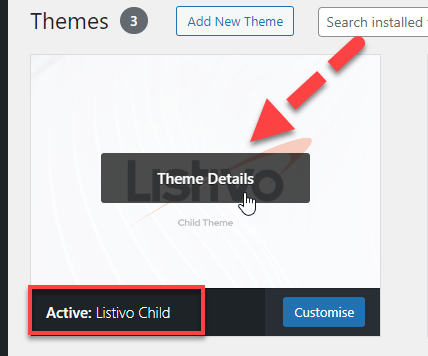
4. Export Theme Settings (If Needed)
- Why: If you plan to use certain settings or customizations from the theme in the future, exporting these settings can save you time.
- How: Use the theme’s built-in export options or plugins like Customizer Export/Import to save your settings.
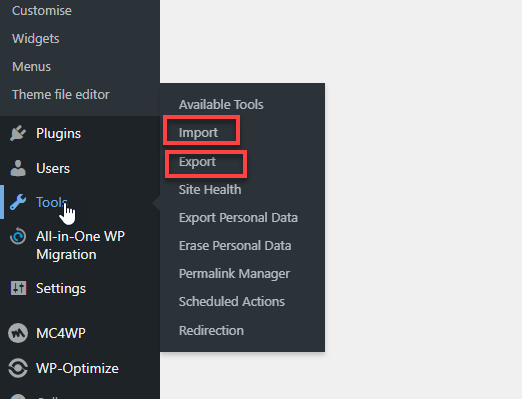
5. Review and Remove Custom Code
- Why: Custom code snippets added to the theme’s files will be lost upon deletion.
- How: Move any custom code to a site-specific plugin or a child theme before deleting the theme.
6. Deactivate and Remove Theme-Specific Plugins
- Why: Some themes come with specific plugins that may no longer be needed once the theme is deleted.
- How: Deactivate and delete these plugins from the Plugins section in the dashboard.
7. Clear Cache
- Why: To ensure that any changes you make are immediately reflected on your site.
- How: Clear your WordPress cache using caching plugins like W3 Total Cache or WP Super Cache, and also clear your browser cache.
4 Methods For How to Remove Theme
Here are four methods for how to remove a theme. First, you can contact your host for assistance with theme removal. Second, use FTP/SFTP to delete the theme directly from your server.
Third, visit the WordPress dashboard, navigate to Appearance > Themes, and delete the theme. Finally, use WP-CLI for command-line removal. Let’s start discussing these methods step by step.
Method 1. How to Remove Theme Using FTP/SFTP
If you prefer a more hands-on approach or if you encounter issues with the WordPress dashboard method, you can also delete a theme using FTP or SFTP. Here's how:
Login to your Cpanel and then click on the FTP Accounts.
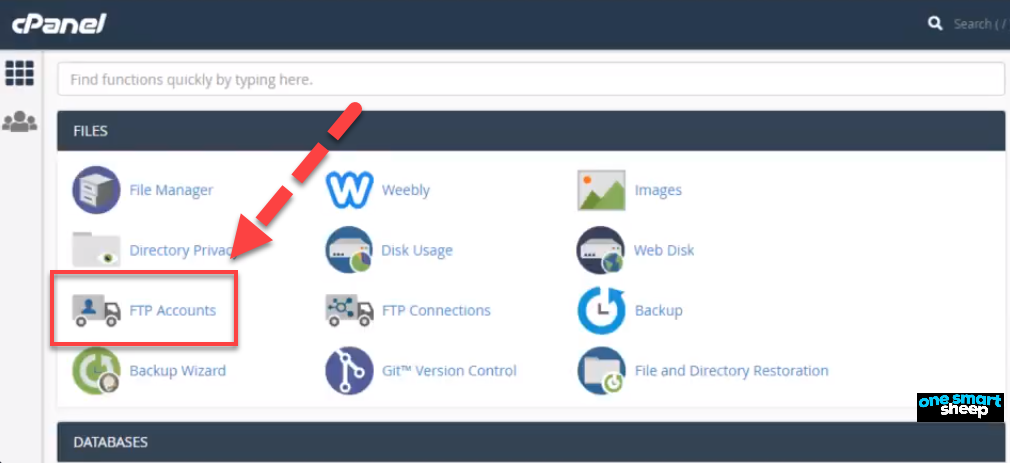
Then in the next step you need to click on the configure FTP Client

Now, the important step comes where you have to connect to your WordPress site using an FTP client like FileZilla.
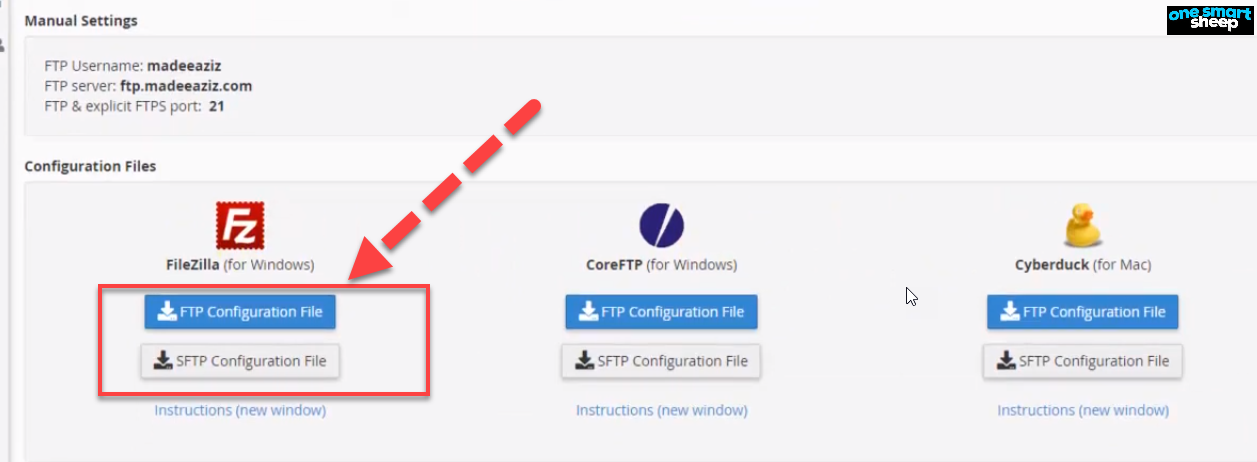
Navigate to the wp-content/themes directory. Before this you need to click on the publi_html file.

Now navigate for wp-content.

Locate the folder of the theme you want to delete.
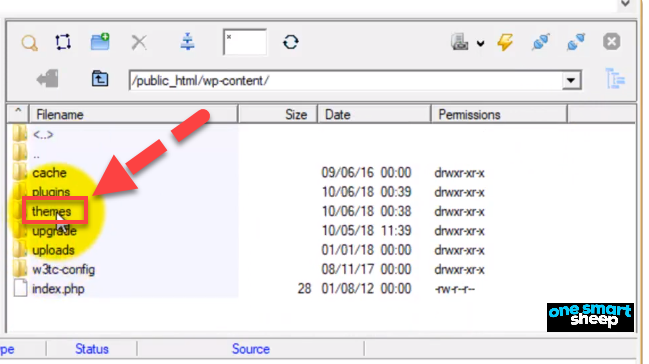
I want to delete the optimizer theme.
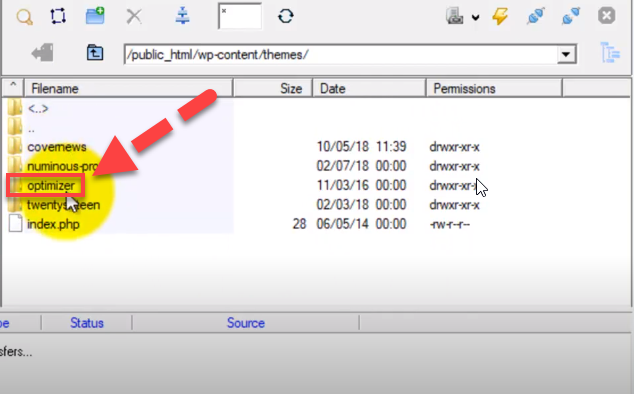
Right-click on the theme folder and select "Delete."
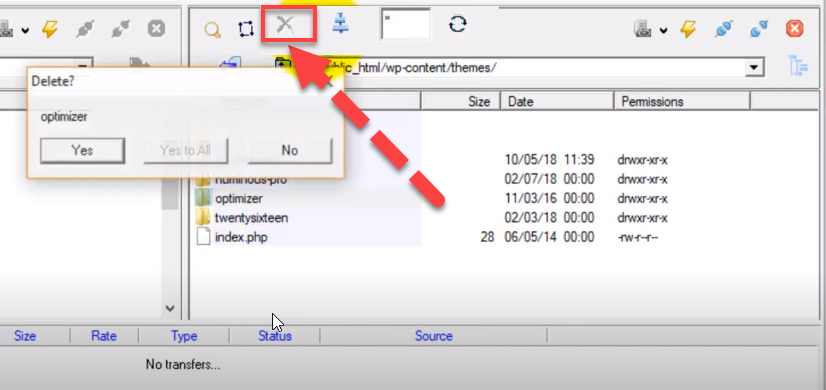
Confirm the deletion.
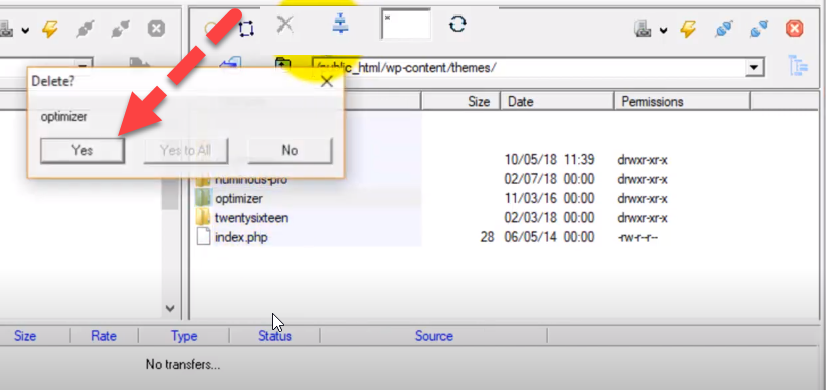
The theme files will now be removed from your server, and the theme will no longer appear in your WordPress themes list.
Method 2. Delete a Theme Using Your Hosting Account
If you're unsure about deleting a theme yourself, or if you've run into problems, you can often delete it through your hosting account.
Most hosting providers offer a control panel or file manager tool where you can access and manage your WordPress files directly.
First, log in to your hosting account dashboard and go to the ‘Websites’ tab. Then, locate the specific website for which you want to delete the theme and click ‘Settings.’
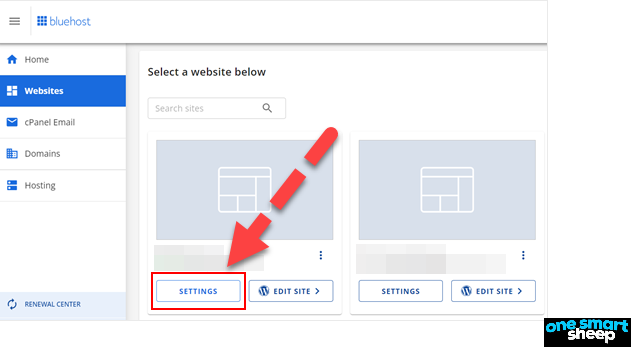
Now, scroll down and click on 'File Manager.'
You will see your site's root folder on this page. This is useful if you host multiple sites on the same account and need to identify the correct root folder.

By familiarizing yourself with these various methods for removing WordPress themes, you'll be well-equipped to keep your site lean, clean, and running smoothly.
Choose the method that best aligns with your skills and preferences, and enjoy a clutter-free WordPress experience.
Method 3. Remove Theme by Visiting the WordPress dashboard
The simplest and most user-friendly way to remove a theme is through your WordPress dashboard. Here's how:
- Log in to your WordPress admin area and navigate to Appearance > Themes.

- Locate the theme you want to delete and hover over it.
- Click on the "Theme Details" button that appears.
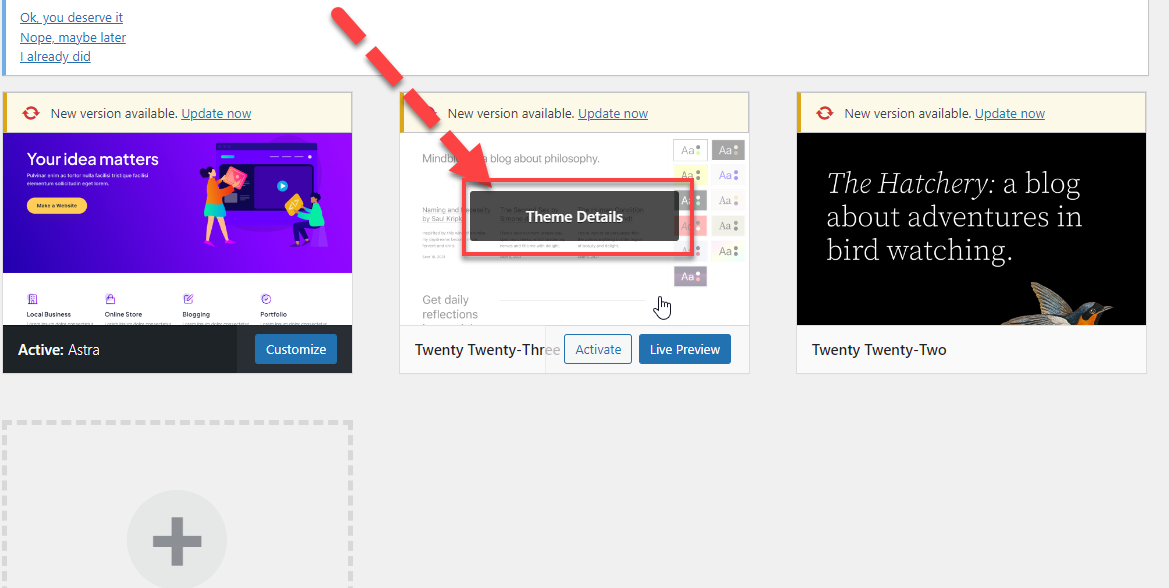
- In the bottom-right corner of the theme details screen, click on the "Delete" button.
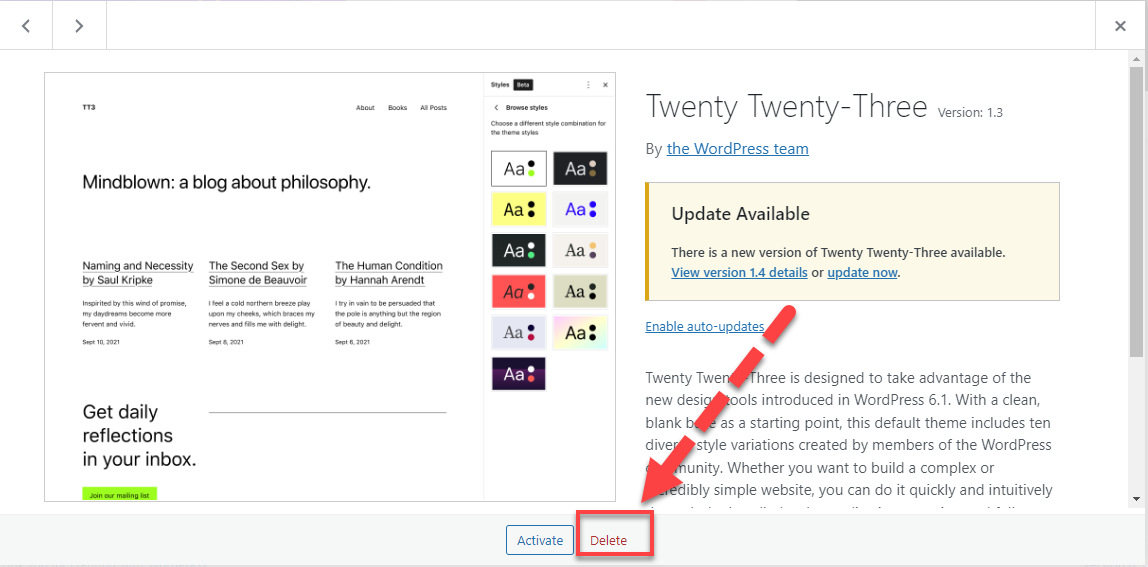
- Confirm the deletion by clicking "OK" in the pop-up window.

WordPress will now remove the theme files from your server, and the theme will no longer appear in your themes list.
Method 4. Remove Theme Using WP-CLI
For advanced users who are comfortable with the command line, WP-CLI provides a quick and efficient way to remove themes. Here's how:
- Connect to your WordPress site using SSH.
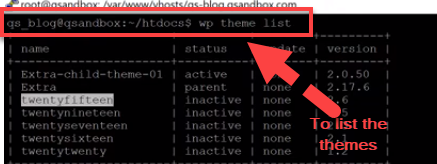
- Navigate to your WordPress root directory. I wrote the theme name twenty fifteen.

- Run the following command, replacing theme-name with the actual name of the theme you want to delete:
wp theme delete theme-name

Then When you run the command you will find the theme you noted is deleted successfully.

- WP-CLI will now remove the specified theme from your WordPress installation.

Differences Between Deleting a Theme and Uninstalling a Theme in Wordpress
Recovering Your Site: What to Do If You Delete a WordPress Theme
If you've accidentally deleted a WordPress theme and find yourself in a panic, don't worry! There are several ways to recover your site and get back on track. Here's what you can do:
1. Restore from a backup
The easiest and most effective way to recover from a deleted theme is to restore your site from a recent backup.
If you've been regularly backing up your WordPress site (which you should be!), you can simply use your backup plugin or service to restore your site to a point before the theme was deleted. This will bring back not only the deleted theme but also any customizations you had made to it.
2. Reinstall the theme
If you don't have a backup, don't despair! You can still recover your deleted theme by downloading a fresh copy from the source and reinstalling it on your WordPress site. Here's how:
1. Visit the theme's official website or the WordPress Theme Directory.
2. Download the theme files to your computer.
3. In your WordPress dashboard, go to **Appearance > Themes**.
4. Click on the "Add New" button at the top.
5. Click on the "Upload Theme" button and select the theme files you just downloaded.
6. Click "Install Now" and then "Activate" to start using the theme again.
Keep in mind that while this method will restore the theme itself, any customizations you had made to the theme will be lost. To avoid this issue in the future, consider using a child theme for your modifications.
3. Contact Your Hosting Provider
If you're unsure about restoring from a backup or reinstalling the theme yourself, reach out to your hosting provider. Many hosts offer backup and restoration services and can help you recover your deleted theme quickly and easily.
Prevention is Key
To avoid the stress and hassle of accidentally deleting a theme, it's crucial to take preventive measures:
1. Always create a complete backup of your WordPress site before making any significant changes, such as deleting a theme.
2. Use a child theme for any theme customizations. This way, even if you delete the parent theme, your modifications will remain intact.
3. Be cautious when deleting themes, and double-check that you're removing the correct one.
By following these steps and best practices, you'll be well-equipped to handle any accidental theme deletions and keep your WordPress site running smoothly.
Wrapping Up
Successfully removing a theme from your WordPress site can enhance its security, performance, and overall manageability.
We’ve explored four proven methods: contacting your host, using FTP/SFTP, navigating the WordPress dashboard, and employing WP-CLI. Each method offers a unique approach, catering to different levels of technical expertise and preferences.
Remember, before deleting a theme, always backup your site, switch to another theme, and ensure no child themes depend on the theme you're removing. These steps will safeguard your site against potential issues.
By following these methods and taking the necessary precautions, you'll keep your WordPress site running smoothly and efficiently. Choose the method that best fits your needs, and enjoy a clutter-free, optimized WordPress experience.
















.svg)
.svg)
.svg)

